
This simple cart for feeding hay was created by a client in Germany from a leftover tote! 🤯
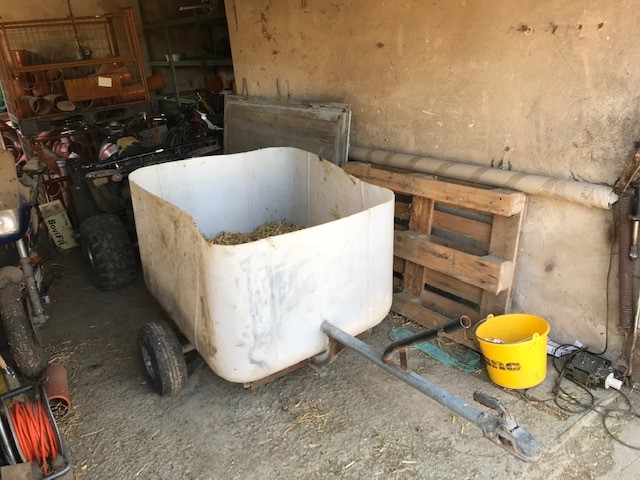
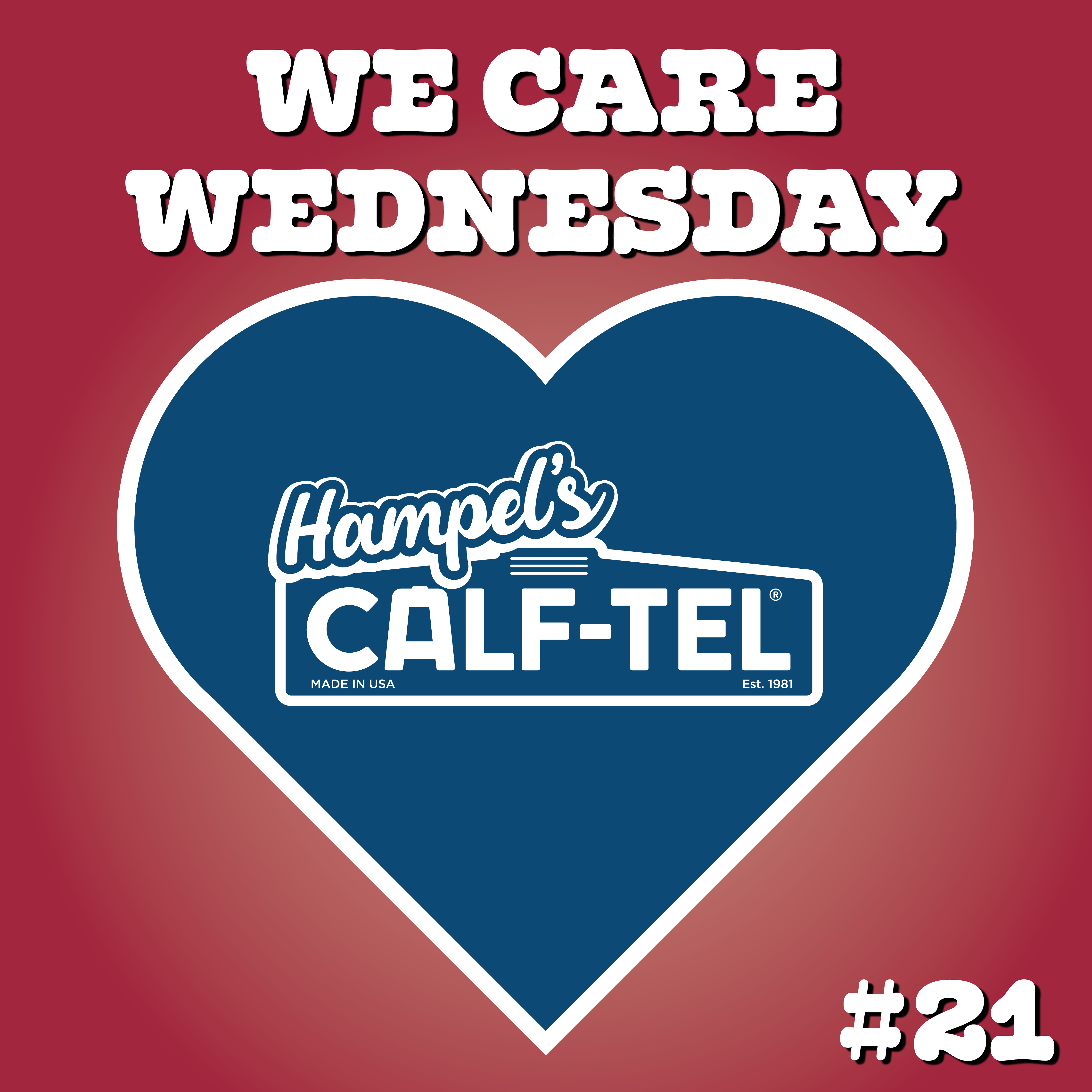

This simple cart for feeding hay was created by a client in Germany from a leftover tote! 🤯



Last We Care Wednesday we talked about the importance of weighing calves and heifers with various types of scales… here is another system used by a client in Europe to weigh calves! 🐄
These scales are mounted on a rail system mounted above the calf pens. It slides on a cable from pen to pen to weigh individual calves. 🤯
How do you weigh calves? Just like farming, there are a million ways to do it. We can’t manage what we can’t measure! 😊





One measure often used in calf rearing is average daily gain. Whether the scales are on a platform, wheels or moved with pallet forks, ease of use seems to be a critical component in whether they are used regularly or not. It is often said that you can’t manage, what isn’t measured. 🤔 Weighing calves and heifers into and out of calf rearing systems at various points in their life can help provide important management data. 😀👍🐄✨



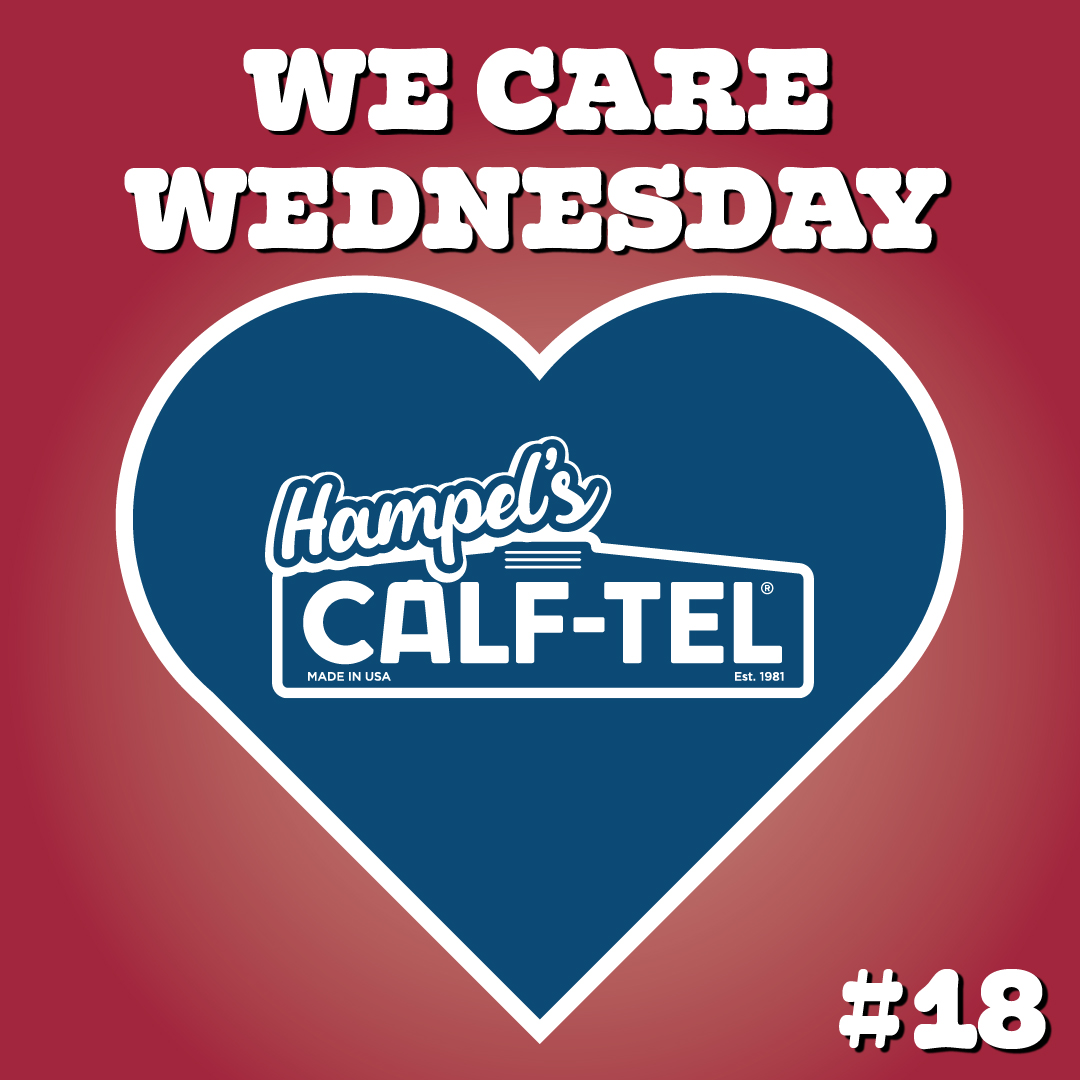
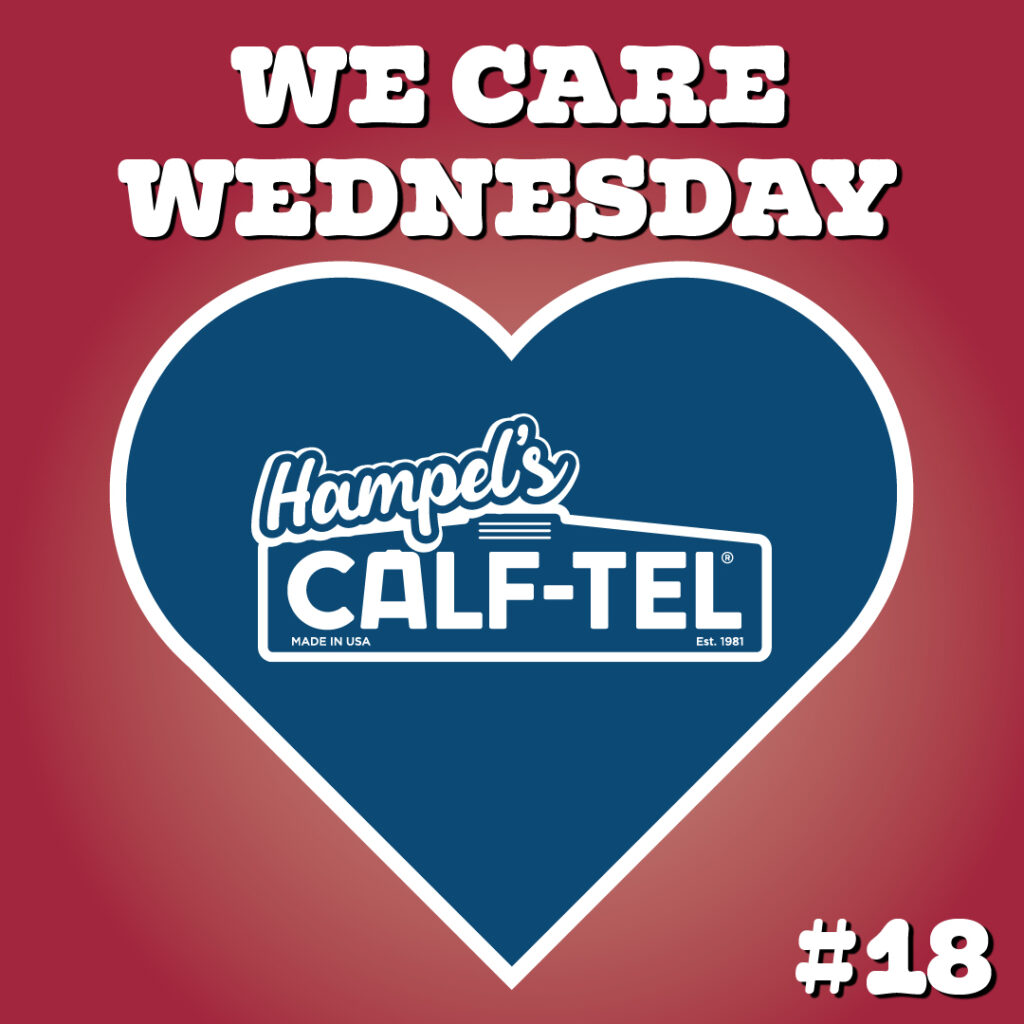
Fresh air is vital to calf comfort. 💨🐄There are many ways to accomplish this including, proper ventilation in calf barns, elevated platforms under hutches in drier climates, and extra vents on hutches. Even older hutches of any style can be easily retrofitted with additional vents. Regardless of the method used, it is imperative that calves have fresh, clean air. 👍
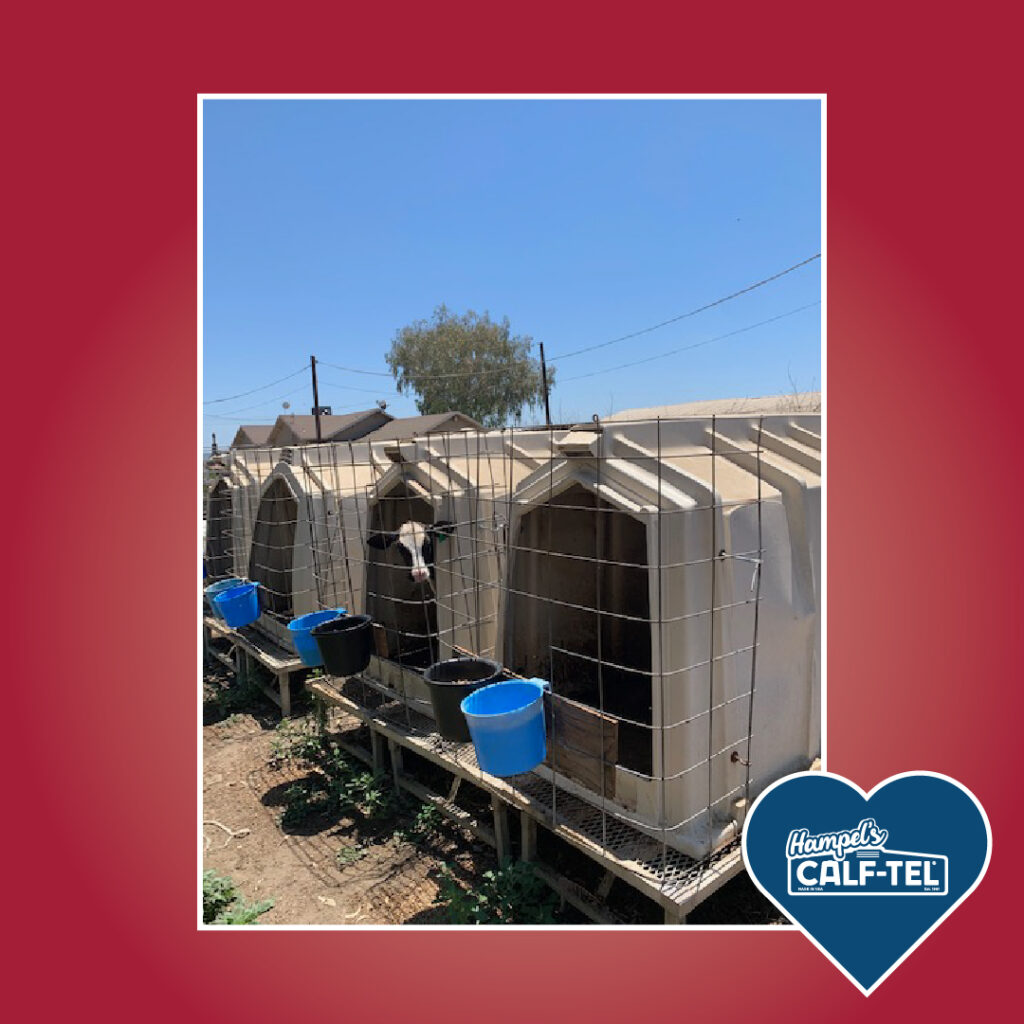
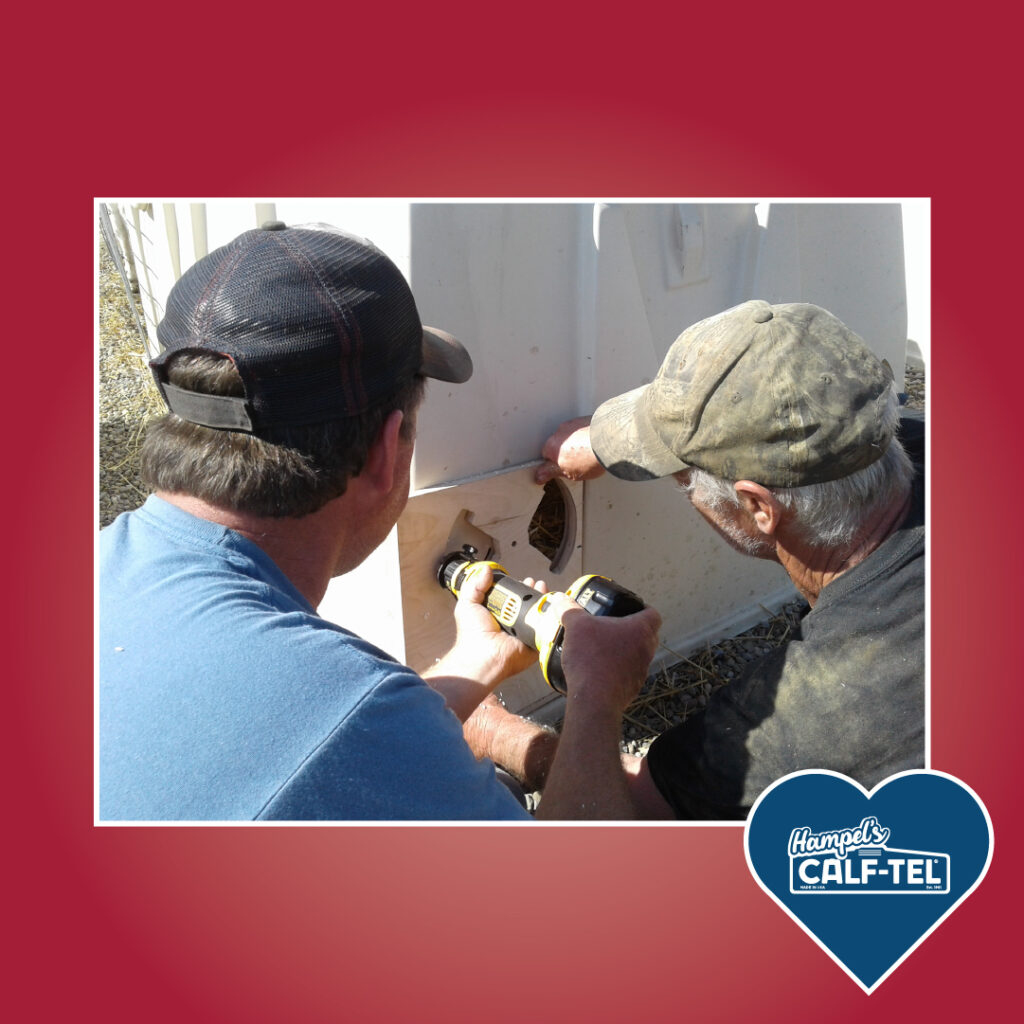
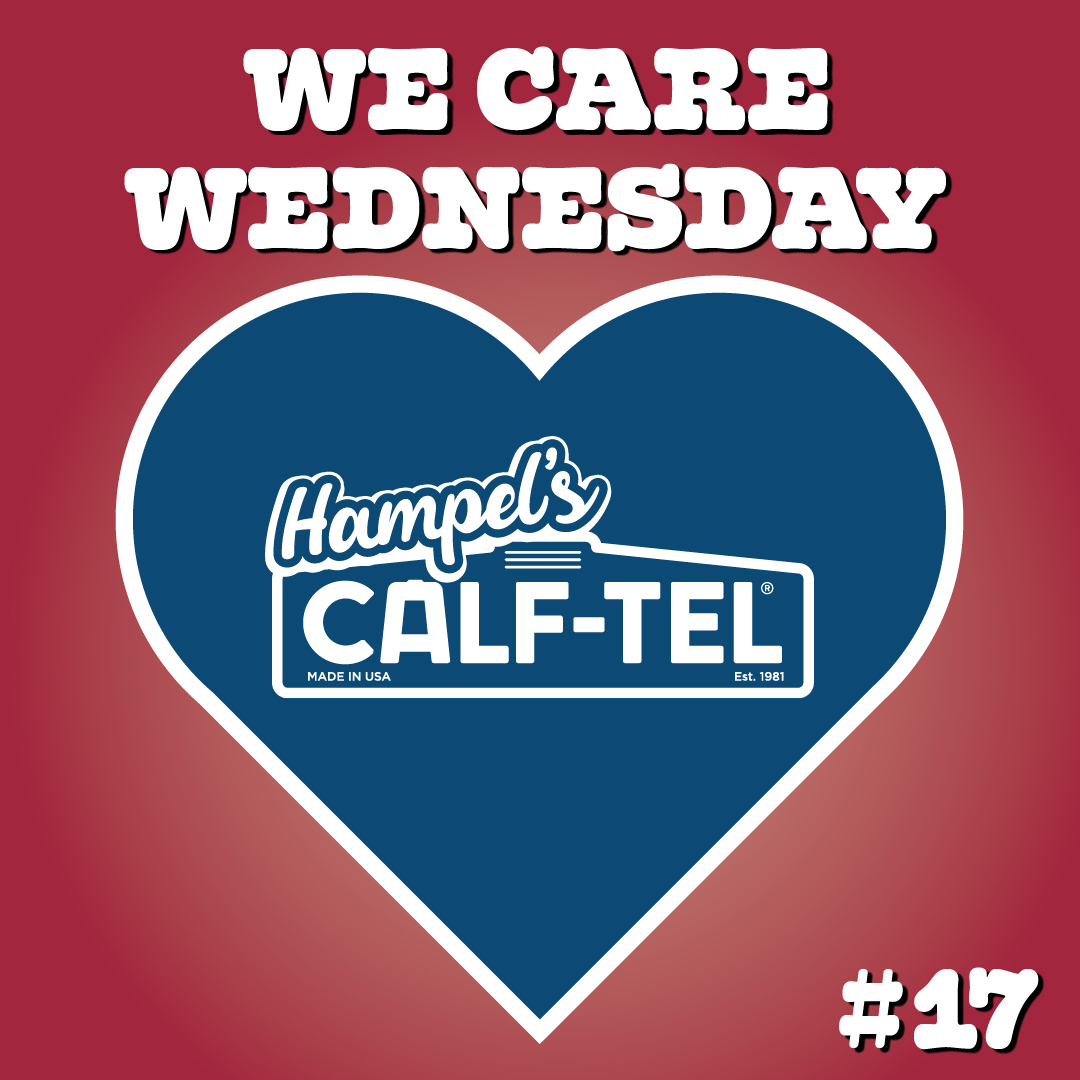
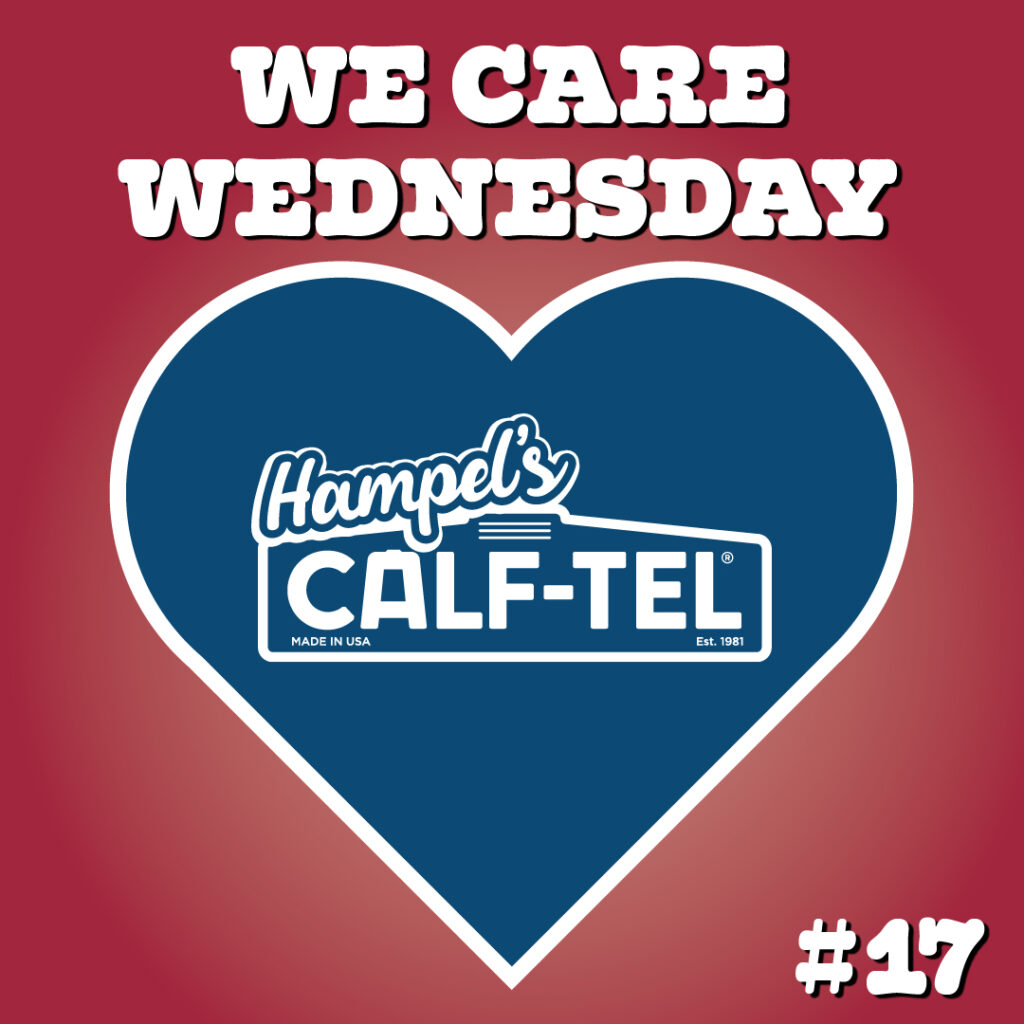
Another use for old rubber matting from the dairy, is to use them in your calf hutch area. The mats are used inside the fence area to minimize mud & manure buildup! 🤯
Mats can also be used inside the hutch during the summer season. Since the mats dry quickly in the heat, the farm uses less bedding, and it provides a dry, comfortable space for calves to rest. 😀🐄👍
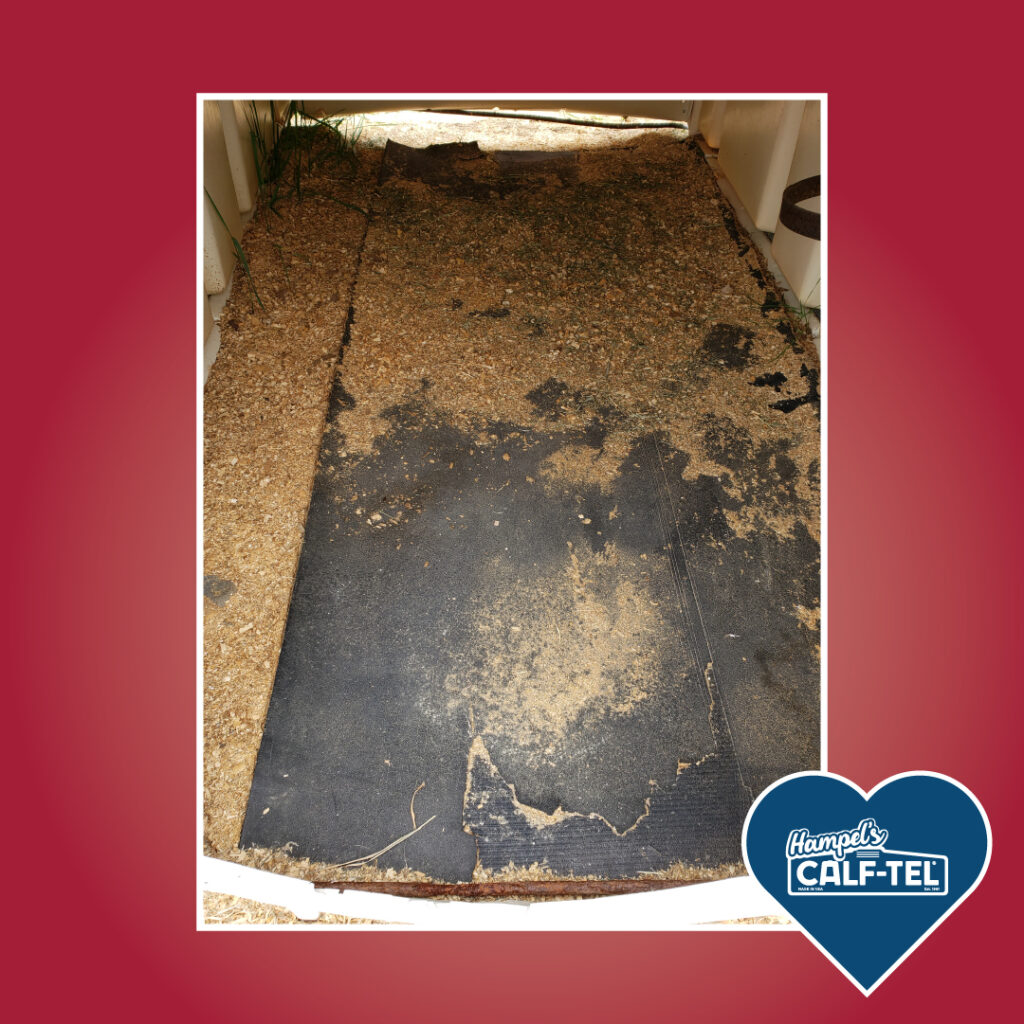
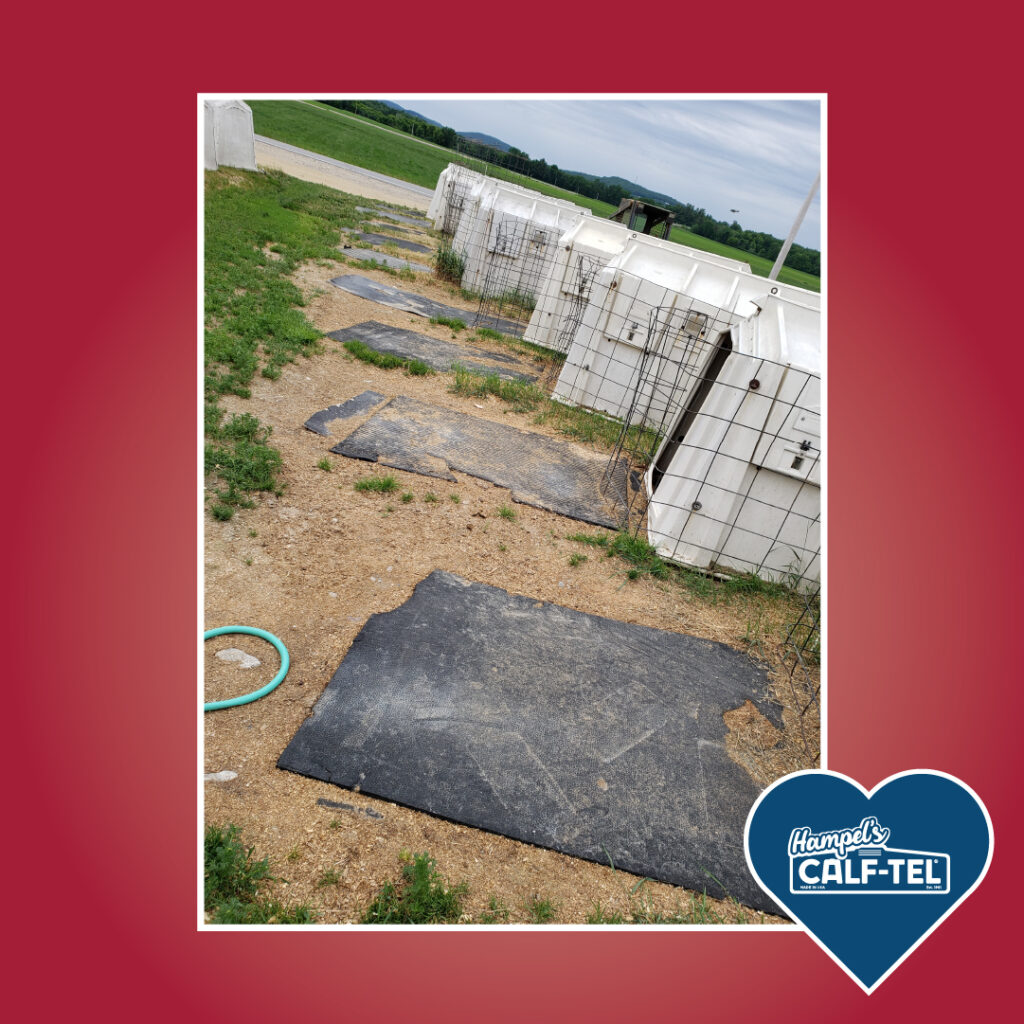
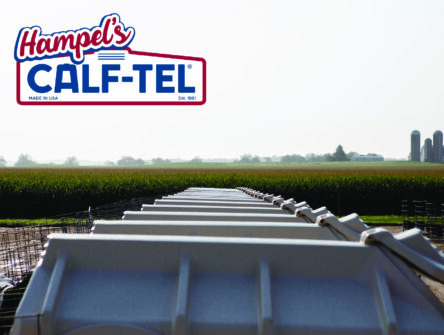
Written by Ann-Christin Fry
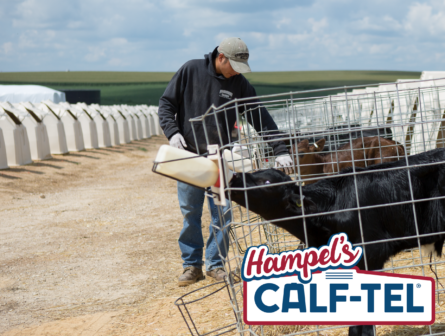
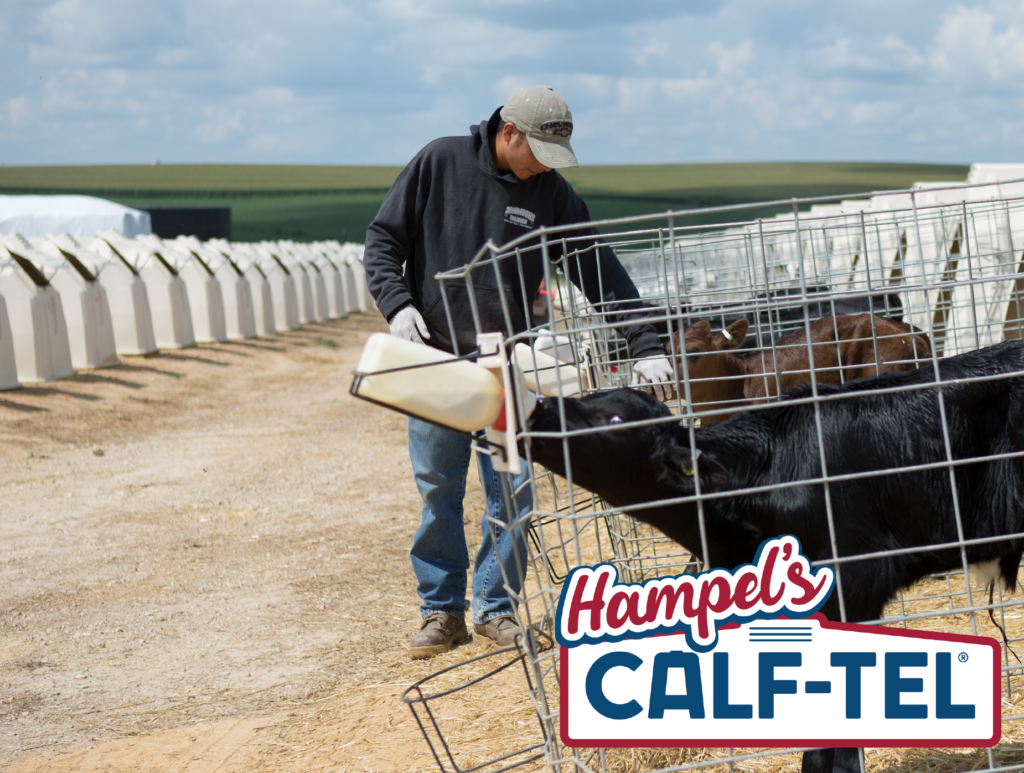
By Sarah Morrison, Ph. D.
A new year means many people have already made resolutions for improvement. I am not one for resolutions but often find this time of year as a good time to reflect on what has happened in the last year and where I would like to go in the next. We often get caught up in all the hustle and bustle but sometimes we just need to go back to basics and make sure we are still doing all the “easy stuff” the way it should be done.
A key pillar of a successful calf program is maintaining the health of those young animals. Calves are the most susceptible to disease and a contributing factor to increased risk could be the hygiene standards of the farm. If improperly managed, there could be increased pathogen load and exposure. Proper management and good hygiene standards will leave your calves less susceptible to health challenges in the preweaning period.
One area to focus on in terms of hygiene standards is calf feeding equipment cleanliness. This includes buckets, nipples, bottles, esophageal tube feeders, and tubes of auto milk feeders. Each calf has direct contact with these multiple times of day and could be the perfect source of inoculation to the calf’s gastrointestinal tract if not properly cleaned and sanitized regularly.
The standard SOP for adequate cleaning of feeding equipment after every use are as follows (Stewart et al., 2005):
How do you determine cleanliness?
A paper published in the Journal of Dairy Science (106:8885–8896) evaluated 50 commercial farms in Quebec through a questionnaire that included self-reported cleaning practices of feeding equipment. This encompassed the frequency of cleaning and replacing feeding equipment of preweaning calves, products and utensils used for cleaning and disinfecting, and the temperature of the water.
Samples from feeding equipment (buckets, nipples, bottles, esophageal tube feeders, and tubes of auto milk feeders) were evaluated by visual inspection, microbiological analysis, and two methods of ATP luminometry. Microbiological samples were taken to get total bacteria count and total coliform count. Two commercially available products were used to evaluate ATP luminometry. One was UltraSNAP (surface ATP test) and one was MicroSnap (coliform test).
In the paper of Quebec herds, there was a wide range in reported hygiene procedures of the feeding equipment. Half of the farms claimed they unscrewed the nipples before cleaning. The different utensils used were brush (68% of farms), washcloth (2%), sponge (2%), or no utensil (28%).
Only 4.3% of farms in this survey reported cleaning feeding utensils after every use.
The temperature of water used for cleaning was very hot (20% of farms), hot (56%), lukewarm (16%), and cold (8%), but no temperature was determined. The primary cleaning product used was dishwashing soap for 40% of respondents, but other soaps were used by others.
Only 40% of farms used disinfectant for feeding equipment, the most popular was sodium hypochloride (50%), followed by penta-potassium bis (peroxymonosulphate bis (sulfate), also known as Virkon (46%; Vetoquinol) and a combination of iodine with sodium hypochloride (4%).
The rinsing process, only 10% used a utensil, which was a brush. The temperature of the rinsing water was very hot (18% of farms), hot (12%), lukewarm (32%), and cold (38%).
Most equipment generally looked clean from visual inspection. All feeding equipment showed contamination, buckets, and tubes of automatic milk feeders were more contaminated compared with nipples, bottles, and esophageal tubes. High contamination of one specific piece of feeding equipment on a farm was not automatically correlated with a high contamination of other feeding equipment on that same farm. There were positive correlations between ATP luminometry and visual scores of buckets, nipples, bottles, and esophageal tubes. However, the study showed that contamination can still be present even when the feeding equipment looks ok to the naked eye.
How does your calf feeding equipment cleanliness stack up?
Sarah Morrison, Ph. D. is involved in dairy research at the W.H. Miner Institute in Chazy, NY and can be reached at morrison@whminer.com.

Written by Grace Kline
One of the most frustrating things I have dealt with in calf raising is being able to see a problem, but not be able to pin it down. For example, if you see a calf with a cough and a runny nose, we can easily assume she is coming down with pneumonia. However, I’m talking about a calf (or maybe a small group of calves) that are a little too quiet. These calves seem to be just surviving, not thriving. I like my calves to be aggressive and excited to see me when I walk past their hutches, so I find it alarming when I have a calf or two that couldn’t care less about my presence. This, among many other symptoms, can be due to a mineral deficiency. Before taking action, consult your vet to properly diagnose a mineral deficiency and receive the best supplements and dosage recommendations.
A story that I can share from personal experience is of an iron deficiency. When I was working on a New York dairy, we fell into what I can only describe as a death spell. The “death spell” did not discriminate between calving location, breed, or sex. The scenario would be as follows: a cow calves with a seemingly healthy calf. The cow produced a good amount of colostrum, and the calf drank the colostrum well. 12 hours later, the calf would seem lazy. 24 hours later, the calf could not stand or hold their own head up. They would wind up dead around 48 hours.
So, what went wrong?
We called the vet to bring bacteria swabs and swabbed everything. Anything that the cow, calf, or milk touched or came close to, we checked. Doing this allowed us to find areas to improve on, however it did not solve the issue. We completed 3 separate necropsies, all inconclusive. Tissue samples and test, somehow inconclusive. We heard of another farmer in the area struggling with anemic cows and thought, “what do we have to lose?” The next calf to be born, we administered a subcutaneous mineral injection and an intramuscular iron injection. This calf was the first one to be thriving at 24 hours since the beginning of our “death spell”. We had an iron deficiency, causing our calves to be weak, lazy, and anemic. Not every deficiency will look the same, but this is what we were faced with in a lack of iron.
White muscle disease can be caused by a lack of selenium, vitamin E, or a combination of the two. White muscle disease can affect both the cardiac muscles and the skeletal muscles (The Cattle Site, 2022). Early onset white muscle disease will cause scarring of the cardiac muscles making it impossible to survive. Calves with late onset white muscle disease will show symptoms such as laziness, stiffness, and struggling to move around or eat.
Calves that are deficient in manganese show a general unthriftiness, slow growth rate, and can have swollen joints. A manganese deficiency that is left untreated can cause reproductive harm in the future. Symptoms in older cattle include cystic ovaries, abortions, and weak/deformed calves.
Copper deficiencies can cause cattle to lose their color, which is especially noticeable around their eyes. Copper is especially helpful for white blood cell and immune function, as well as bone growth (Torres, 2022).
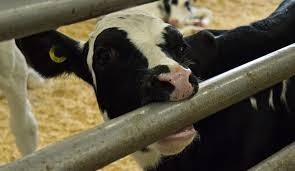
As you have probably noticed, the symptoms for each of these deficiencies are fairly similar- low growth rate, laziness, and low appetite. There are also plenty of other minerals than the ones listed above that are important, including calcium and phosphorous for bone growth and support. Other symptoms can include licking/eating dirt or other objects. It is normal for calves to play with things in their mouths, but it is not normal for them to become obsessed with eating a dish or part of their pen.
You will notice dents and scratches in their pens or buckets if they try to fulfill a deficiency on their own. Calves that are deficient will generally have dull eyes and a rough hair coat. Hair coats in calves should be full and flat, not spotty and standing on end. Working with your vet, you will be able to distinguish between any deficiency symptoms and disease symptoms.
A specific mineral deficiency can be tough to pinpoint. Deficiencies can be detected through blood and tissue samples; however, some may require samples from a necropsy after the animal has died. Your vet may recommend a well-rounded mineral supplement to touch on each of these areas. Some supplements can be added to a newborn calf protocol. Paying attention to your calves and fresh cows will help you identify patterns and enable you to give your vet the best information you can.
Grace Kline operates Diamond Valley Dairy in Southeast Pennsylvania with her husband Jacob, along with two of his brothers. They milk 60 cows in a tie stall, where Grace cares for the calves and young stock. Grace graduated from Morrisville State College in Morrisville, New York, after completing an internship on a dairy in Wisconsin where she learned many of her calf care skills.
Dairy-Cattle. “Appropriate Methods of Diagnosing Mineral Deficiencies in Cattle.”DAIReXNET, 16 Aug. 2019, dairy-cattle.extension.org/appropriate-methods-of-diagnosing-mineral-deficiencies-in-cattl e/.
Torres, Hannah. “Common Mineral Deficiencies in Cattle and Treatments – Provico Rural.” ProviCo, 14 Feb. 2022,www.provicorural.com.au/common-mineral-deficiencies-in-cattle-and-treatments/.
“White Muscle Disease.” White Muscle Disease | The Cattle Site, The Cattle Site, 29 Sept. 2022, www.thecattlesite.com/diseaseinfo/258/white-muscle-disease.


[Germantown (WI), 11.30.2023] — Hampel’s Calf-Tel, a leading name in the agricultural industry, is excited to announce the appointment of Alessio Tenca as the new Sales Manager for Italy. This move showcases the company’s commitment to strengthening its presence and enhancing customer experience in the region.
Alessio, originally from Sydney, Australia, decided to return to his homeland, Italy, in 1991. He later completed his education there. With over two decades of experience in the agricultural sector, Alessio has consistently demonstrated excellence in animal wellness and biosecurity in farming. His expertise has been instrumental in addressing challenges and driving growth in the industry.
In 2014, Alessio commenced his journey with Hampel as a dealer in Italy. His primary role was to spearhead the sales and expansion of Calf-Tel products in the country. Given his remarkable accomplishments and dedication, in 2023, Hampel provided Alessio with the unique opportunity to work directly with the team. This role would see him contributing not only in Italy but also extending his expertise across regions like the Middle East, Australia, and New Zealand.
“We are thrilled to have Alessio on board in this new capacity,” said Brandon Sowder, Director of Global Business Development. “His extensive experience and deep understanding of the agricultural domain will be instrumental in propelling Calf-Tel’s vision forward. We believe that with Alessio leading the way in Italy, we are poised for unparalleled growth and success in the coming years.”
Hampel’s Calf-Tel, a division of Hampel Corporation, began serving the agriculture industry in 1981 with the introduction of Calf-Tel housing systems. Today it is the number one choice for calf housing, worldwide. For more information, visit www.Calf-Tel.com or learn more at www.facebook.com/calftel and www.youtube.com/calftel.
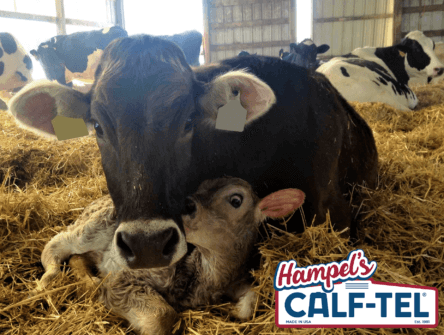
by Daniela Gonzalez Carranza
Dystocia, or difficult calving, is not desirable, but it is an inevitable situation that we will have to face from time to time, and repercussions for cows and calves are complex. For example, even slight assistance can have an impact on production and fertility, not to mention on calf morbidity and mortality. Regardless of your calving management system, it is crucial to understand the process and stages of parturition.
What should we know about calving?
Cows go through three stages of calving, and it starts days before calving when the calf’s cortisol (stress hormone) triggers hormonal changes in the cow that initiates parturition.
The first stage refers to the cervix’s dilatation and can last between 4-24 hours, depending on parity. As hormones dilate the cervix, other signs begin to show, for example, the first one can be isolation, and as the time to calve comes closer, the cow displays other signs such as raising the tail, increasing laying bouts, and paying attention to the abdomen.
Once the cow is dilated and the calf is in delivery position, stage 2, which is delivery of the calf, starts. It is considered that stage two starts once the cow has frequent abdominal contractions (ideally 2-3 per minute) and the “water bag” (amniotic sac) is shown. The normal duration of this second stage can go anywhere from 30 minutes to 2 hours for multiparous cows and 3-4 hours for primiparous cows. Stage 2 ends when the calf is born. The third stage is the expulsion of the placenta.

Cow in Stage 2, notice the attention to abdomen and amniotic sac is shown.
When do I need to check?
Assisting calving can be challenging since each cow is different, and the process can be affected by various factors, including environmental conditions. However, here are some practical tips that can help determine whether intervention is necessary.
How to do a vaginal exam?
When doing a vaginal exam, always remember these golden rules:
The first step is to evaluate the cervix dilatation. No progress will be made if the cow is not dilatated enough for the calf to go through. The next step is to evaluate the calf’s position or the reason for slow progress.

Calving workshops delivered by Cornell Cooperative Extension specialist.
Some tips
There is no secret recipe for how to intervene in each dystocia, every case is different, and there may be difficult scenarios where you will need professional assistance from your veterinarian. Nonetheless, intervening calmly and precisely is crucial for a smooth transition into lactation, reducing injuries, and prioritizing the welfare of cows and calves.
Daniela González is a Dairy Management Specialist with the North Country Regional Ag Team from Cornell Cooperative Extension.
She earned her degree in Veterinary Medicine in Mexico City and her Master of Professional Studies degree from Cornell University in Animal Science with a concentration in dairy business management.
Daniela’s interests include reproduction, herd health, and business management.
Back in Mexico, Daniela worked on dairy farms as a veterinarian. She also collaborated with small and medium dairy farms in her community, allowing her to gain experience and interest in extension work.